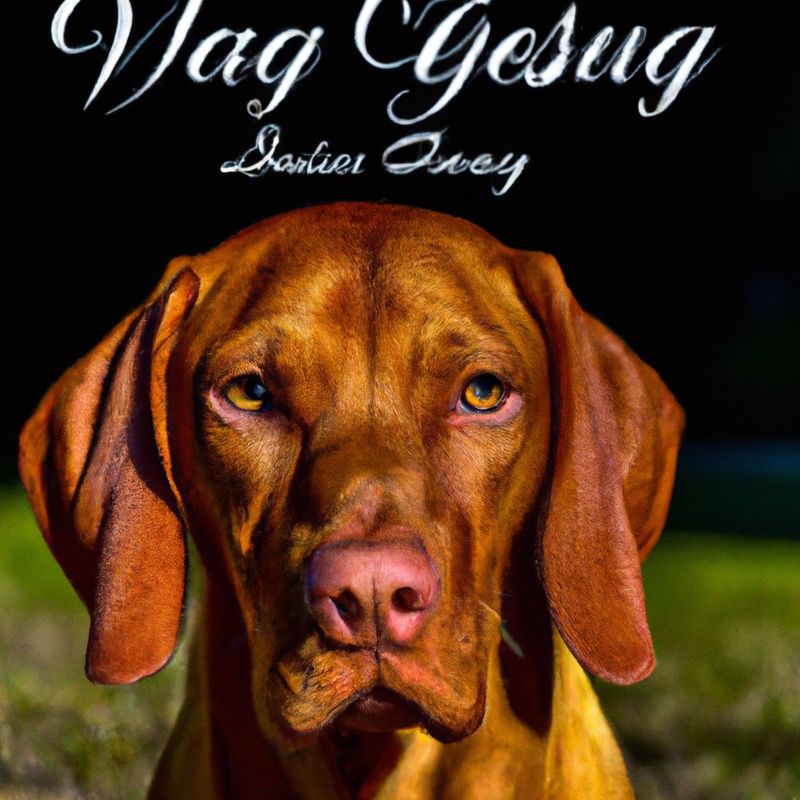What Are Some Effective Ways To Prevent Vizslas From Chewing On Household Items?
Key Takeaways:
- Provide plenty of mental and physical stimulation to prevent boredom.
- Use deterrent sprays or bitter apple spray to discourage chewing behavior.
- Use positive reinforcement and reward-based training to teach appropriate chewing habits.
- Provide appropriate chew toys and rotate them regularly to keep your Vizsla engaged.
Are you tired of coming home to find your household items chewed up like a hurricane struck?
Well, you’re not alone.
Vizslas, with their boundless energy and curious nature, are prone to unleash their chewing prowess on anything within reach.
But fear not! As an expert in dog behavior and training, I’m here to share some effective strategies to help you prevent this destructive behavior.
From providing sufficient exercise and mental stimulation to using appropriate chew toys and implementing consistent positive reinforcement, we’ll cover it all.
So, grab your chewy pen and let’s dive in to keep your Vizsla’s chewing urges in check!
| Prevention Method | Description |
|---|---|
| Provide appropriate chew toys | Make sure to offer a variety of durable and safe chew toys to redirect your Vizsla’s chewing behavior onto appropriate items. |
| Use deterrent sprays | Apply a bitter-tasting deterrent spray on household items that you want to protect to discourage your Vizsla from chewing on them. |
| Keep household items out of reach | Pick up and store items that may be tempting for your Vizsla to chew on, such as shoes, socks, or other small objects. |
| Provide mental and physical stimulation | Engage your Vizsla in regular exercise and provide mental stimulation through puzzle toys or interactive games to help reduce chewing due to boredom. |
| Supervise and redirect | Always keep an eye on your Vizsla and redirect their chewing behavior to appropriate items if you catch them in the act of chewing on household items. |
Providing sufficient exercise and mental stimulation
Importance of exercise for Vizslas
Exercise is essential for Vizslas.
It helps them release their energy and stay physically fit.
Regular exercise also promotes mental stimulation and prevents behavioral issues caused by boredom.
Engaging in activities like running, playing fetch, or going for long walks not only strengthens the bond between you and your Vizsla but also contributes to their overall well-being.
Aim for at least an hour of exercise each day to keep your Vizsla happy and healthy.

Engaging Vizslas in mental activities and puzzles
Engaging Vizslas in mental activities and puzzles is a great way to prevent them from chewing on household items.
Here are some effective strategies:
- Puzzle toys: Invest in interactive toys that challenge your Vizsla’s problem-solving skills. These toys dispense treats or require them to manipulate different components to access food rewards.
- Hide-and-seek games: Hide treats or toys around the house and encourage your Vizsla to use their nose to find them. This engages their senses and keeps them mentally stimulated.
- Training sessions: Regular obedience training not only strengthens the bond with your Vizsla but also provides mental stimulation. Teach them new tricks or commands to keep their minds occupied.
- Scent work: Vizslas have excellent scenting abilities. Engage their natural talents by incorporating scent work activities, such as hiding treats or scented objects for them to find.
- Food puzzles: Use food-dispensing puzzles or interactive feeding toys to make mealtime more engaging for your Vizsla. This requires them to work for their food, providing mental stimulation and preventing boredom.
Remember to supervise your Vizsla during these activities and gradually increase the difficulty level as they become more skilled.
Happy mental exercising!

Recommended exercise routines for Vizslas
Vizslas are energetic dogs that require plenty of exercise to keep them happy and healthy.
A recommended exercise routine for Vizslas includes a mix of physical and mental stimulation.
Some activities you can try are:
- Long walks or hikes to provide them with physical exercise
- Engaging in interactive play sessions, such as fetch or tug-of-war, to keep their minds active
- Participating in obedience training or agility courses, which can challenge them mentally and physically
- Trying out activities like tracking or nose work to stimulate their natural hunting instincts. Remember to always consider your Vizsla’s individual needs and consult with a veterinarian or dog trainer for personalized exercise recommendations.
Using appropriate chew toys and alternatives
Identifying safe and durable chew toys for Vizslas
When choosing chew toys for your Vizsla, focus on toys that are both safe and durable.
Look for toys made from high-quality materials such as rubber or nylon, as these tend to be more durable.
Avoid toys that are easily torn apart or contain small parts that could be a choking hazard.
Opt for toys specifically designed for strong chewers.
Popular options include Kong toys, Nylabones, and durable puzzle toys.
Regularly inspect the toys for wear and tear and replace them if necessary to ensure your Vizsla’s safety.

Introducing interactive toys and treat-dispensing puzzles
One effective way to prevent Vizslas from chewing on household items is by introducing interactive toys and treat-dispensing puzzles. These types of toys engage your Vizsla’s mind and keep them occupied, reducing their desire to chew on other items.
Interactive toys, such as puzzle toys or toys that require them to work for treats, provide mental stimulation and satisfy their natural instincts.
Treat-dispensing puzzles can also keep your Vizsla entertained for longer periods of time, preventing boredom and the urge to chew.
Redirecting Vizslas to appropriate chewing options
Redirecting Vizslas to appropriate chewing options is key to preventing them from damaging household items. Here are some effective techniques:
- Offer a variety of chew toys made specifically for dogs. Different textures and shapes will keep them interested.
- Rotate the toys regularly to maintain their novelty. This will help prevent boredom and the temptation to seek out other objects to chew on.
- Use interactive toys that dispense treats. This provides mental stimulation and rewards them for chewing on appropriate items.
- Use positive reinforcement. Praise and reward your Vizsla when they choose to chew on their toys instead of household items.
- Deter them from chewing on inappropriate objects by applying bitter apple spray or a taste deterrent spray to those items.
Remember, consistency is key. By redirecting their chewing behavior and providing them with suitable options, you can help prevent your Vizslas from causing damage around the house.
Proper crate training and management
Benefits of crate training for preventing chewing
Crate training can be a effective tool in preventing chewing behaviors in Vizslas.
Here are some benefits of crate training for preventing chewing:
- Provides a safe space: A crate can serve as a safe and secure space for your Vizsla, helping to reduce anxiety and the desire to chew on household items.
- Limits access to objects: When properly crate trained, your Vizsla will be unable to reach and chew on household items that may be tempting.
- Teaches responsibility: Crate training teaches your Vizsla to understand boundaries and helps to develop a sense of responsibility for their own space.
- Reduces boredom: A crate can help prevent boredom, which is often a common cause of destructive chewing. By providing appropriate toys and mental stimulation inside the crate, you can satisfy your Vizsla’s need for activity and play.
- Facilitates supervision: When you can’t directly supervise your Vizsla, such as when you are away or unable to keep an eye on them, crating them can ensure they don’t engage in unwanted chewing behavior.
Remember, crate training should always be done in a positive and gradual manner, ensuring that your Vizsla feels comfortable and relaxed inside their crate.
Steps to crate train Vizslas effectively
To effectively crate train Vizslas, start by introducing the crate as a positive and safe space. Gradually increase crate time, ensuring they have plenty of exercise beforehand.
Use treats and toys to make the crate enticing.
Avoid using the crate as punishment. Provide comfortable bedding, and cover the crate to create a den-like atmosphere.
Gradually increase the distance between you and the crate.
Always reward calm behavior inside the crate. Patience and consistency are key when crate training Vizslas.
Using crate as a safe space and preventing separation anxiety
Using a crate can be a helpful way to provide your Vizsla with a safe space and prevent separation anxiety.
It creates a den-like environment where they feel secure and comfortable.
Make sure to choose the right size crate so they have enough room to stand, turn around, and lie down.
Gradually introduce crate training by making it a positive experience with treats and toys.
Use the crate when you need to leave the house and gradually increase the duration of time spent in the crate.
Always ensure the crate is a positive and calming space for your Vizsla.
Consistent positive reinforcement and redirection
Understanding the importance of positive reinforcement
Positive reinforcement is a key element in training Vizslas to prevent them from chewing on household items. It involves rewarding good behavior, such as using chew toys, with praise, treats, or playtime.
This helps your Vizsla associate positive outcomes with appropriate chewing behavior.
It’s important to consistently reinforce the positive behavior and redirect them when they start chewing on something they shouldn’t. Positive reinforcement creates a positive learning environment and strengthens the bond between you and your furry friend.
Teaching Vizslas appropriate behaviors through redirection
One effective way to teach Vizslas appropriate behaviors is through redirection.
When you notice your Vizsla starting to chew on something they shouldn’t, calmly redirect their attention to a suitable chew toy or bone.
This helps them understand what is acceptable to chew on.
Consistency is key, so make sure to provide plenty of appropriate chewing options for your Vizsla and praise them when they choose those items.
Additionally, ensure that hazardous objects are out of their reach to prevent any accidents.
Using clicker training and rewards to discourage chewing
One effective way to discourage chewing in Vizslas is through clicker training and rewards. The process involves using a clicker, which makes a distinct sound, to mark desired behavior.
When your Vizsla refrains from chewing on household items, immediately click the clicker and offer a reward, such as a treat or praise.
Repeat this consistently so your dog associates not chewing with positive outcomes. This positive reinforcement helps redirect their attention away from chewing and encourages more appropriate behavior.
Addressing anxiety and boredom
Identifying signs of anxiety or boredom in Vizslas
Identifying signs of anxiety or boredom in Vizslas is important to ensure their well-being.
Look for behaviors like excessive barking, destructive chewing, pacing, or restlessness.
They may also display signs such as increased or decreased appetite, licking or biting themselves excessively, or even avoidance behaviors.
A bored or anxious Vizsla might also exhibit hyperactivity or low energy levels.
Paying attention to these signs will help you address their needs and provide them with appropriate stimulation and attention.
Ways to reduce anxiety and provide mental stimulation
One efficient way to reduce anxiety and provide mental stimulation for Vizslas is through regular exercise.
Taking your dog for daily walks or runs can help release pent-up energy and keep them mentally engaged.
Additionally, engaging in interactive play sessions, such as fetch or puzzle toys, can provide mental stimulation and prevent boredom.
Lastly, establish a consistent routine for your Vizsla, as structure can help reduce anxiety and provide a sense of stability.
Seeking professional help for severe cases of anxiety
If your Vizsla is experiencing severe anxiety that is leading to destructive chewing behavior, seeking professional help is essential.
A veterinarian or a professional dog trainer with experience in anxiety-related issues can assess the situation and provide guidance.
They may recommend behavior modification techniques, training exercises, or even medication to help manage your dog’s anxiety.
Remember, every dog is unique, so it’s crucial to consult with a professional to tailor a plan that suits your Vizsla’s specific needs.
Frequently Asked Questions
Can Vizslas outgrow their chewing habits?
Vizslas can indeed outgrow their chewing habits.
As they mature, their urge to chew tends to diminish.
With consistent training, providing appropriate chew toys, and ensuring they get enough mental and physical exercise, you can help your Vizsla develop better habits as they age.
It’s important to be patient and consistent in redirecting their chewing behavior towards appropriate items.
How long does it take to train a Vizsla to stop chewing?
Training a Vizsla to stop chewing can take anywhere from a few weeks to a few months. The duration of the training process depends on factors such as the dog’s age, temperament, and previous experiences.
Consistency and patience are key when teaching your Vizsla not to chew on household items.
It’s important to provide appropriate chew toys, supervise your dog, and redirect their attention to the toys whenever they start chewing on something they shouldn’t. With time and consistent training, your Vizsla will learn to break the chewing habit.
Are there any specific chew toys recommended for teething puppies?
Yes, there are specific chew toys that are recommended for teething puppies. Some popular options include:
- Kong Puppy Chew Toys: These durable toys are made from a special rubber formula that is gentle on growing teeth and gums.
- Nylabone Puppy Chew Toys: These toys are designed to satisfy a puppy’s natural urge to chew while promoting healthy tooth and jaw development.
- Benebone Dental Chew Toy: This chew toy is made from durable nylon and has a unique shape that helps clean teeth and freshen breath.
- Rope Toys: Puppies love to play and chew on rope toys, which can also help clean teeth and provide mental stimulation.
When choosing chew toys for your teething puppy, make sure they are specifically designed for puppies and avoid toys with small parts that could be a choking hazard. Always supervise your puppy while they are chewing and replace worn-out or damaged toys to ensure their safety.
Is it necessary to consult a professional trainer or dog behaviorist?
Is it necessary to consult a professional trainer or dog behaviorist?
Consulting a professional trainer or dog behaviorist can be highly beneficial in addressing chewing issues in Vizslas.
These experts have the knowledge and experience to assess the root cause of the problem and provide a tailored training plan.
They can guide you on techniques to redirect your dog’s chewing behavior, provide reinforcement exercises, and ensure consistent training.
Their expertise can help prevent further damage to household items and promote a healthier, happier relationship with your Vizsla.
Final Verdict
Preventing Vizslas from chewing on household items requires a multifaceted approach.
Providing sufficient exercise and mental stimulation is crucial to meet their high energy needs.
Using appropriate chew toys and alternatives helps redirect their chewing behavior.
Proper crate training and management create a safe space and prevent destructive chewing.
Consistent positive reinforcement and redirection teach them appropriate behaviors.
Addressing anxiety and boredom reduces the likelihood of chewing.
By implementing these strategies, Vizsla owners can effectively prevent their furry friends from damaging household items and ensure a harmonious home environment.







